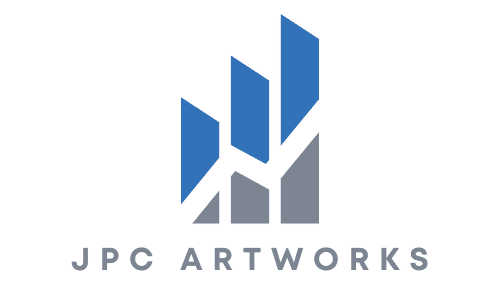What Are the Impacts of Social Dancing on Mental Health and Community Engagement?

The art of dance has been a part of our human culture for centuries. It is a form of expression, a celebration, and often, a communal activity. You may view dance as a form of entertainment, a hobby, or even an exercise. But, have you ever considered the role dance can play in your mental health and overall wellness?
In recent years, a growing number of scholars and health experts have begun to delve into the deeper benefits of dance, particularly social dance. The term "social dance" refers to a variety of dance styles where interaction with others and a sense of community are key components. These include traditional forms like folk and ballroom dancing, as well as more contemporary styles such as salsa and hip-hop dance.
Also read : How Does the Regular Practice of Qigong Influence Chronic Pain and Mobility?
In this article, we will explore the potential impacts of social dance on mental health and community engagement. We shall refer to various studies and articles published on platforms like PubMed and Google Scholar, as well as data gathered from dancers and participants in dance interventions.
The Connection Between Dance and Physical Health
Dance is a form of movement that engages the entire body. From your head to your toes, every body part plays a role in conveying the rhythm and emotion of a dance. This total body engagement makes dance a unique form of physical exercise that promotes overall wellness.
Have you seen this : Can Urban Greening Initiatives Reduce the Heat Island Effect and Enhance Public Health?
A study published on PubMed detailed that regular dancing can improve cardiovascular health, balance, and body composition. It also highlighted the benefits of dance for older adults, including reduced risk of falls and improved cognitive function.
Dance doesn’t discriminate. Whether you’re young or old, fit or not-so-fit, anyone can find a form of dance that suits their physical abilities and preferences. The key is regular participation and engagement.
Dance and Mental Health: An Underrated Intervention
While the physical benefits of dance are well recognized, many people overlook its potential as a mental health intervention. The act of dancing can stimulate the release of endorphins, the body’s natural "feel-good" chemicals. This can result in a mood lift, reducing feelings of stress, anxiety, and depression.
A crossref article highlighted a study where participants were asked to take regular dance classes for a period of time. The study found a significant decrease in the participants’ self-reported stress and anxiety levels during the intervention period. Moreover, some participants reported a lasting positive impact on their mental health, well beyond the intervention period.
Additionally, dance engages the brain in a unique way. It involves memorizing steps, coordinating movements, and responding to music, which can improve memory, focus, and cognitive flexibility. These positive cognitive effects further contribute to improved mental health.
Dance as a Social Tool: Building Communities and Fostering Engagement
As a socially interactive activity, dance can also be a powerful tool for community building and engagement. It helps to bridge gaps between different cultures, generations, and social groups, fostering a sense of unity and shared experience.
A Google Scholar article examined the impact of a community dance program on social interaction and community engagement. The study found that participants reported increased social interaction, a greater sense of belonging, and more positive attitudes towards their community after participating in the dance program.
Dance also serves as a non-verbal form of communication. It allows people to express themselves creatively, build connections with others, and experience the joy of shared movement. This can help to improve self-esteem, social skills, and overall quality of life.
The Future of Dance as a Health and Social Intervention
With the growing body of evidence supporting the benefits of dance for health and community engagement, it’s clear that this art form has much more to offer than just entertainment.
Many scholars and health experts are advocating for the inclusion of dance-based interventions in mental health treatment and community development programs. They argue that dance can provide a fun, accessible, and cost-effective way to promote mental and physical health, as well as social cohesion.
From an individual perspective, participating in social dance can be a great way to improve your own health and well-being, while also contributing to your community. Whether it’s joining a local dance class, attending social dance events, or even organizing your own dance gatherings, there are many ways to get involved.
Bear in mind, the goal isn’t to become a professional dancer, but rather to experience the joy and benefits of movement, music, and social interaction. As with any activity, it’s important to find a form of dance that you enjoy and feel comfortable with. This will ensure that you stay motivated and reap the most benefits from your dance experience.
While we still have more to learn about the full range of benefits that social dance can offer, one thing is clear: dance is more than just a form of entertainment. It is a powerful tool for physical health, mental well-being, and community engagement. So, why not give it a try? You might just discover a new passion, improve your health, and make some new friends along the way.
Quantitative and Qualitative Impacts of Dance Intervention on Mental Health
In analyzing the impacts of dance intervention on mental health, it’s crucial to consider both quantitative and qualitative changes. Quantitative changes could include measurable reductions in anxiety or depression levels, while qualitative changes would be more subjective, like improvements in mood or feelings of self-worth.
A PubMed article emphasized that dance movement therapy can bring significant improvements in both areas. In a structured dance intervention, participants showed reduced stress and anxiety levels post-intervention, verified through quantitative measures like self-report surveys and physiological data.
Simultaneously, qualitative outcomes were reported in the form of increased emotional well-being and self-esteem. Engaging in dance intervention, participants expressed experiencing a newfound sense of joy, empowerment, and creative expression. The ability to express oneself through dance movement facilitates an emotional catharsis that can be profoundly therapeutic.
Importantly, the benefits of dance are not limited to any specific age group or demographic. From children and adolescents to older adults, dance can serve as a potent tool for mental health. For instance, older adults who engage in dance can enjoy cognitive benefits like improved memory and concentration, as well as emotional benefits like ease of loneliness and a sense of belonging.
Dance as a Means of Social Connection
The act of dancing together creates an immediate social connection. This shared experience can foster a sense of community and mutual understanding, transcending traditional barriers of language or culture.
According to an article on Google Scholar, a dance program brought diverse cultural groups together, fostering mutual respect and understanding. The program participants reported feeling more connected to their community, emphasizing the role of dance in fostering social cohesion.
Beyond its role in community building, dance provides a space for individuals to engage in non-verbal communication. This can be particularly beneficial for those who struggle with traditional social interactions. The shared language of dance can provide an avenue for individuals to express themselves, connect with others, and gain social confidence in a supportive and inclusive environment.
Conclusion: The Power of Dance as a Holistic Intervention
In light of this information, it’s evident that dance is more than just physical activity or a form of entertainment. It’s a holistic intervention that can have profound impacts on an individual’s physical health, mental health, and social connection. Its benefits range from the tangible and quantifiable to the abstract and deeply personal.
The argument for incorporating dance in mental health treatment and community development programs is compelling. As highlighted in various articles from PubMed, Crossref, and Google Scholar, dance intervention can bring about significant improvements in mental health markers, from reduced anxiety levels to increased self-esteem. Additionally, it fosters a sense of social connection and community engagement, which are crucial for overall well-being.
In these times, where mental health issues are prevalent and the need for community connection is ever-present, dance offers a compelling, inclusive, and accessible solution. Whether it’s ballroom dancing with older adults, hip-hop with adolescents, or folk dance in a community group, there’s a style for everyone. And while the specific steps or styles may differ, the end goal remains the same: to promote health, happiness, and unity through the joy of movement.
It’s time to embrace dance not just as a hobby or an exercise, but as a powerful, holistic tool for better health and stronger communities. Remember, everyone can dance. You don’t have to be a professional — the goal is to move, connect, and enjoy. So, why not give it a try? Dance your way to better health and a stronger community — one step at a time.
